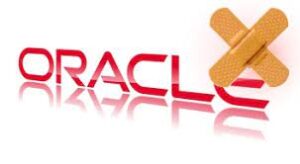To implement CI/CD in mobile app development, there are three different phases available to us: Development, Staging, and Release. Changes are going to need to be made to the backend URLs, firebase files, and any other environment-specific dependencies in order to construct the build for the environment that we wish to use.
When you wish to do this, it is a procedure that requires a significant investment of your time and effort each and every time. Here, automation steps in to make our lives simpler and more convenient. This time-consuming manual method can be automated, which will solve the problem of wasted time. We will be able to accomplish this by utilizing CI/CD.
What Does CI / CD Mean?
Continuous Integration and Continuous Delivery or Continuous Deployment are the concepts that are condensed into the term CI/CD.
- CI
Continuous integration (CI) is a process in which developers routinely integrate source code into a shared repository accessible to everyone in the team. After then, each check-in (commit) is validated by an automated build, which enables the team to identify issues at an earlier stage and find solutions to them more rapidly.
- CD
Continuous delivery (CD) is the capacity to make alterations, add new features, implement configuration changes, fix bugs, and deploy experimentation, either into production environments or into the hands of users in a secure and speedy manner in a method that is sustainable.
CI/CD implementation is spread across 4 stages.
- The configuration of the environment: I’ve already indicated that we have three distinct environments; in order to automate this process, we will be aware of the modifications that need to be made.
- Configuring Firebase: Firebase offers a tool that simplifies the process of sending your apps to beta testers through their app distribution platform. You have the opportunity to obtain preliminary feedback as your apps are rapidly distributed to the smartphones of testers.
- Fastlane: Fastlane is an open-source platform that speeds up deployment of Android and iOS applications. You are able to automate every step of the development and release workflow with the help of Fastlane.
- Jenkins is a piece of automation server software that is open source and free. With Jenkins, developers are able to achieve a perfect CI/CD pipeline.
CI/CD Development Stages
- Environment Setup:
What is the purpose of having three distinct API environments?
Establishing three distinct API environments—one for development, one for testing, and one for production—means that each may be developed with its own database, code-base, and other backend services. Even though the application is in testing mode, developers are able to continue working on it and making changes thanks to this feature, which also prevents beta testers from wreaking havoc on the production database. Because of a demand from the environment, I make use of many backends and firebase projects in their respective forms. In addition to that, I would like to simultaneously install three separate applications on my mobile device. This allows the developer to keep track of the features, and it also allows testers to distinguish between the various builds.
- Using Firebase:
There are a variety of service providers accessible in the market who offer distribution services, and one of these can be used to test and distribute the application. On the other hand, we will be utilizing the Firebase App Distribution service. Because of this service, we are able to manage the app’s distribution as well as its many versions.
Firebase App Distribution enables the process of delivering your apps to reliable testers as straightforward as possible. You will be able to acquire early and frequent feedback on your apps if you swiftly get them onto the devices of your testers.
- Fastlane
Fastlane automates the construction and release of your apps. It does this by providing a collection of tools that can work either independently or in combination to do tasks in android such as the following:
- Putting up a structure
- Sign the APK with the Keystore.
- Upload to the distribution on Firebase.
- Notify Testers
- Jenkins
Jenkins® is an automation server that is both open-source and free to use. Automating the steps involved in the software development process allows companies to move more quickly with Jenkins. Jenkins is used to manage and control software delivery operations over the entirety of the program’s lifecycle
You have the ability to configure Jenkins so that it monitors locations such as GitHub, Bitbucket, or GitLab for any changes to the code, and then it will automatically perform a build using technologies such as Maven and Gradle. You can use container technologies such as Docker and Kubernetes to run tests, and then use the results of those tests to do actions in production such as rolling back or rolling forward.
A continuous delivery pipeline is an automated expression of the procedure that you use to get software from version control all the way through to the users and customers of your business.
Also read:- write for us tech
Also read:- Technology write for us
Also read:- write for us technology blogs
We are able to produce a single text file that defines many steps of the process, and this file can then be committed to the source control repository of a project. This lays the groundwork for the concept of “Pipeline-as-code,” in which the CD pipeline is considered to be a component of the application and is versioned and reviewed in the same manner as any other code. Jenkinsfiles have two different syntaxes –
• Declarative
• Scripted
A more recent addition to the Jenkins Pipeline, the Declarative Pipeline provides a larger set of syntactical features than the Scripted Pipeline syntax. It is also intended to make it simpler to write and read the Pipeline code with DevOps Ci CD services.
Conclusion
Ultimately, CI and CD lead to a deployment methodology that is far quicker and more consistent, with fewer bugs, and produces fantastic products for end users. Building software, deploying it, and growing as a team all happen more quickly when you have a solid CI/CD pipeline. It is extremely beneficial to have a specific continuous integration and continuous delivery system for newly developing technologies (such as Flutter), since this greatly simplifies the workflow associated with deployment.
Author bio:
Hello, I am a professional SEO Expert & Write for us Technology blog and submit a guest posts on different platforms- we provides a good opportunity for content writers to submit guest posts on our website. We frequently highlight and tend to showcase guests.




